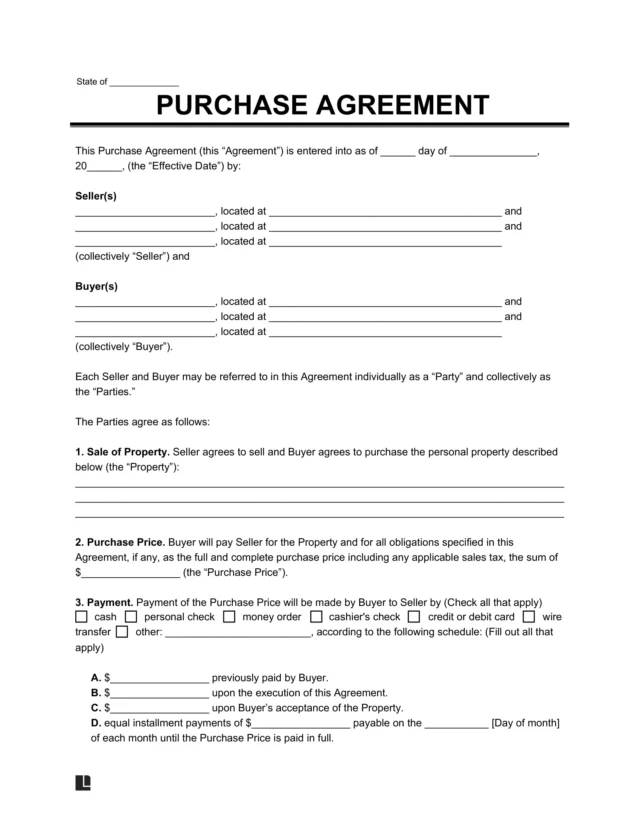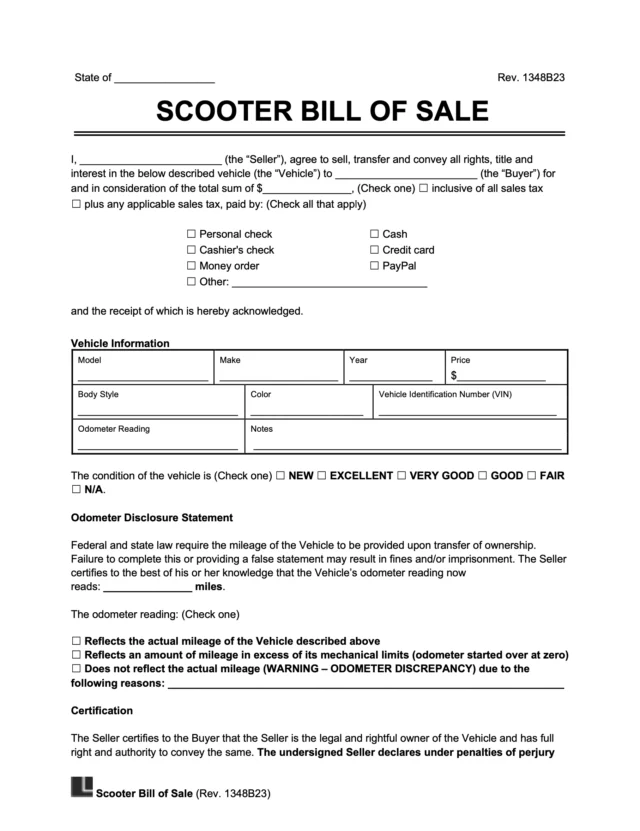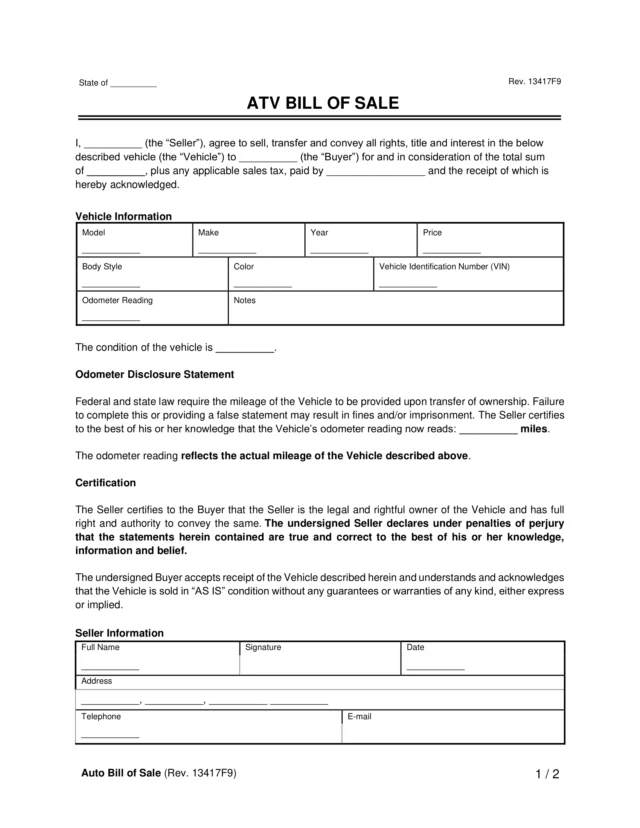What Is an RV Bill of Sale?
An RV bill of sale is a legal document that records the sale of a recreational vehicle and confirms the transfer of ownership from seller to buyer. It can be used for both motorhomes and towable RVs, including trailers and campers. The buyer and seller sign it, and it typically includes the:
- Sale price
- Buyer and seller details
- RV details
If agreed, it can also include inspection results, a down payment, or a security deposit. These details show exactly what both sides agreed to before the sale.
When to Use an RV Bill of Sale
If you sell or give someone a motorhome, travel trailer, camper, or fifth-wheel, you should record it in a recreational vehicle bill of sale. This is especially important in private sales as it protects both the buyer and the seller.
Some states, like New Mexico and New York, require an RV bill of sale for DMV registration and title transfer. In others, it’s optional but still worth having for proof and peace of mind. Having details in writing helps prevent disputes over payment, mechanical issues, or ownership later on.
You can prepare one quickly using Legal Templates’ free RV bill of sale in PDF or Word. Simply enter your details and have a document ready to sign.
How to Write a Bill of Sale for an RV
Selling an RV means more than handing over the keys. Your bill of sale records the details that prove the transfer is complete. Use this guide to make sure yours covers everything it should.
- List the RV details by entering the make, model, year, and VIN. Specify the RV type, such as Class A, Class B, Class C motorhome, fifth-wheel, travel trailer, toy hauler, or pop-up camper. Include the length, number of slide-outs, sleeping capacity, and floor plan to identify the RV clearly.
- Record the mileage and generator hours by adding the current odometer reading for motorized RVs. Include the generator brand and the total hours of use.
- Provide tank and utility information by listing the propane size and the capacities for the fresh, grey, and black tanks. Indicate within the recreational vehicle bill of sale if the tanks are heated or have new sensors installed.
- Describe the gear and systems included, such as the hitch type, sway bars, and brake controller. Add any leveling gear, awnings, sewer hoses, surge protectors, and satellite equipment, along with the solar wattage, inverter size, and battery type.
- Enter the weight and towing specs, including the GVWR, GAWR, hitch rating, and tongue weight, to show the RV’s towing requirements.
- Note the roof and appliance details by stating the roof type and the date it was last resealed. List the types of appliances: fridge, stove or oven, microwave, air conditioning units, and furnace.
- Disclose any damage or repair history, such as leaks, termite or rodent damage, water problems, or major structural repairs.
- Fill in the sale information, including the sale price, the buyer’s and seller’s full details, and both signatures to complete the RV bill of sale.
Once everything’s filled out in your RV bill of sale, review it together. Make sure all information is accurate and matches any other documents related to the sale.
Understand Every Custom Term You Add
In the case of Meyer v. Korges Enterprises, buyers sued over a defective $200,000 RV. The seller pointed to a forum-selection clause in the bill of sale and tried to move the case to another state.
This is a clear example of how even a basic RV bill of sale can contain terms with serious consequences. If you’re adding custom terms, make sure you understand exactly what they mean.
Sample RV Bill of Sale
Below is a sample you can use as a guide. You can also download an RV bill of sale template in PDF or Word to complete and print.









